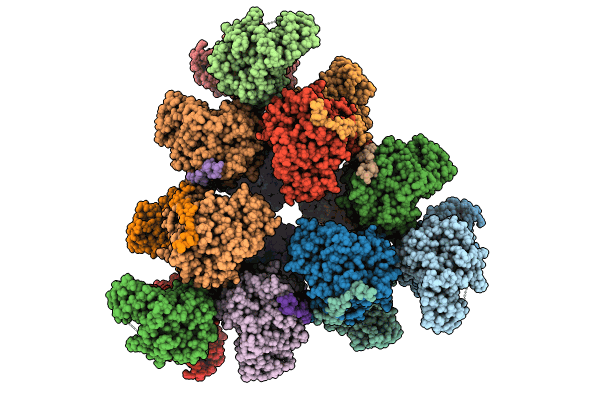
Deposition Date
2022-08-04
Release Date
2024-02-21
Last Version Date
2024-09-11
Entry Detail
PDB ID:
8AN1
Keywords:
Title:
Structure of a first level Sierpinski triangle formed by a citrate synthase
Biological Source:
Source Organism:
Synechococcus elongatus PCC 7942 = FACHB-805 (Taxon ID: 1140)
Host Organism:
Method Details:
Experimental Method:
Resolution:
3.93 Å
Aggregation State:
PARTICLE
Reconstruction Method:
SINGLE PARTICLE


